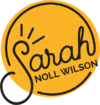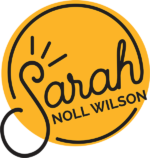
People are tired. People are hurting. People feel broken.
At the time of writing this, we are now 532 days into the COVID-19 pandemic. That is 17 and a half months of prolonged exposure to stress and trauma ranging from the pandemic itself to hate crimes across the country swiftly followed by racial justice movements, accelerating effects of climate change, a divisive presidential election, an insurrection attempt, and some workplaces refusing to acknowledge the people they employ are people.
I am deeply concerned about our collective mental health.
Your People Are Tired – and So Are You
How do I know? I know because we as a company consistently hear from our clients and partners that they are tired.
When we lead emotional resilience workshops and ask individuals how they are truly feeling, we constantly hear, “Anxious, fatigued, confused.”
When I raise just four questions on Twitter about our resilience reserves, it is met with 15,000+ interactions and responses from people like you, sharing stories of heartache, exhaustion, burnout, anger, and strife.

I know because in Gallup’s latest State of the Global Workplace: 2021 Report, 43% of all US employees polled responded that their daily stress is at an all-time high. A deeper dive shows that 64% percent of workers under 40 said they experienced stress a lot of the previous day, compared with 51% of those 40 and older.
Additionally, Gallup found that one in three US employees report feeling engaged at work. 66% of your workforce is Actively Disengaged, Struggling, or Suffering, and simply going through the motions of their work daily right now.
Our collective resilience is spent.
You may also like: What Happened When My Resilience Reserve Emptied
Resilience is Not an Infinite Resource
The path to resilience is likely to be fraught with emotional upheaval.
We exhausted much of our physical resilience throughout 2020. Back then, we knew extraordinarily little about the virus and were in a constant state of hyper-vigilance. We felt this type of adrenaline-driven stress response to this unknown virus in a very physical sense. COVID-19 activated our fight-or-flight modes often, and we found our adrenal systems pumping our cortisol to help our bodies stay safe.
But now, we find ourselves in late 2021 clinging to every remaining ounce of emotional stamina we have left. Stamina that is necessary as we try to live with a pandemic raging around us. We have allowed our increased knowledge about what is happening with COVID-19 to lull us into a false sense of security and resignation.
Our brains are trying, desperately, to keep up with the ever-increasing needs for patience, endurance, and even resistance in the face of the new COVID-19 variants’ unpredictability.

Leaders, I want to speak to you directly now. We cannot keep operating as if everything is normal. We cannot keep expecting people to work 40+ hours every week the pandemic rages on. We cannot expect them to maintain or increase their workload. We cannot expect them to be up to intensely creative or innovative work right now. We cannot ask people to ‘push through because they have no other choice.
We cannot white-knuckle our way back to ‘normal.’
Your team members are not machines. They are humans. Humans who have just suffered through 17 and a half months of ongoing traumatic events, both macro and micro. People are not feeling seen or heard as the vulnerable, beautiful people they are. Instead, we have heard from multiple clients that they feel like they are simply cogs in a machine that could not care less about them.
I want to remind you that we all have a limit to our willingness to serve inside a toxic system. In the past year, employees’ feelings of anger, worry, stress, and sadness have accelerated faster than any of the polled years since 2009. Of US employees surveyed,
- 48% experience daily worry
- 57% experience daily stress
- 22% experience daily anger
- 26% experience daily sadness
We would not expect animals to push through dangerous conditions or ailments, and we should not expect our people to, either. Operating with a machine-mentality to push people until they break will drive your workers out the door (and with emotional and mental well-beings frayed, it is already happening. One in every five workers has changed jobs in the last year, with half of those changes being permanent).
 You might also like: The Great Resignation: A Workforce Reckoning Worthy of Reflection
You might also like: The Great Resignation: A Workforce Reckoning Worthy of Reflection
Fear-based Leadership Decisions are Accelerating Burnout and Turnover
I can hear your fearful “Yeah, but…” being whispered at the screen.
“Yeah, but if we slow down, people will never work at this capacity again.”
“Yeah, but if we allow everyone to work remotely even after vaccination, they’ll never want to come back to the office.”
“Yeah, but if we ease off some of these performance review requirements, they’ll never operate back at previous levels again.”
I am here to tell you: They will. (We need to stop making decisions and writing policies for the 5% of people who might take advantage of them).
 It can be scary to do things differently than we are comfortable with. It is imperative you try, or you risk setting your organization back when the recovery inevitably comes.
It can be scary to do things differently than we are comfortable with. It is imperative you try, or you risk setting your organization back when the recovery inevitably comes.
Companies that are not responding to the needs of the people they serve with curiosity, openness, and grace are losing people faster than companies that are experimenting with ways to do work differently.
In June 2021, according to the Bureau of Labor Statistics, 3.9 million people (about twice the population of New Mexico) quit their job. The most considerable losses were in business industries, manufacturing, and state and local government.
Cross-referencing that data with a recent survey by Monster.com, where a third of the respondents indicated burnout was responsible for their decision to leave their role, it is easy to spot the role people’s depleted resilience is playing in the Great Resignation.
 The Physical and Emotional Toll of Exhaustion and Burnout
The Physical and Emotional Toll of Exhaustion and Burnout
The long-term consequences of prolonged exhaustion are more significant than you realize. Unaddressed job burnout can have significant physical effects, including:
- Excessive stress
- Fatigue
- Insomnia
- Sadness, anger, or irritability
- Alcohol or substance misuse
- Heart disease
- High blood pressure
- Type 2 diabetes
- Vulnerability to illnesses
Several studies, notably those conducted by the Centers for Disease Control and Prevention (CDC), have revealed significant increases in self-reported behavioral health problems.
 According to a follow-up of one CDC report, which surveyed adults across the United States in late September 2020,
According to a follow-up of one CDC report, which surveyed adults across the United States in late September 2020,
- 33% reported symptoms of anxiety or depression,
- 15.1% said having started or increased substance use,
- 29.6% reported stress-related symptoms, and
- 11.9% reported having serious suicidal thoughts in the previous 30 days.
These figures are double what we would have predicted before the COVID-19 pandemic.
If you are in crisis, call the toll-free National Suicide Prevention Lifeline at 1-800-273-TALK (8255), available 24 hours a day, seven days a week. The service is open to anyone. All calls are confidential. http://www.suicidepreventionlifeline.org
 The Effects of employee Burnout on Business
The Effects of employee Burnout on Business
The resiliency of your teams does not just affect mental well-being, but it also influences your team’s productivity, innovation, and cooperation. Burnout will affect not only the quantity of production from employees but also the quality of work performed.
One study found a correlation of a lower-stress work atmosphere and a direct link with employee production, with happy workers seeing a 12% increase in productivity on average.
Despite this, I see many companies and leaders remain unwilling (or unable) to find a way to get curious about and understand their team members’ private lives.
According to a Verizon Media study, a staggering 93% of managers believe that their employees’ mental health is detrimental to their bottom line. Yet, only one-quarter to one-third of managers worldwide felt prepared to handle their employees’ mental health issues. And 80% of managers are concerned about using inappropriate language when discussing sensitive matters such as mental health, ethnicity, gender, etc.
Signs of employee Exhaustion and Burnout
Whether we want to recognize it or not, whether we are comfortable with it, the stress and trauma of the last 532 days are with us every day.
Just because we know what is happening does not mean our body does. And like I have said before: if we do not allow ourselves and our employees ample time to recover and rest, our bodies will do it for us.
Mayo Clinic advises you to consider the following questions:
- Have you or a team member developed a cynical or critical attitude at work?
- Do you or a team member drag yourself to work and struggle to get started?
- Have you or a team member been irritated or impatient with your coworkers, customers, or clients?
- Do you or a team member lack the energy to be productive continuously?
- Do you or a team member have trouble concentrating?
- Do you or a team member feel unsatisfied with your accomplishments?
- Do you or a team member have a negative attitude about your job?
- Are you or a team member relying on food, drugs, or alcohol to make you feel better or to make you feel nothing?
- Have your or a team member’s sleeping patterns shifted?
- Do you or a team member suffer from inexplicable headaches, stomach or intestinal issues, or other physical symptoms?
If you responded yes to any of these questions, you might be suffering from symptoms of burnout.
You might also like: How We Can Confidently Create Our Post-Pandemic (Work)Life
How to Serve Your Employees when the Whole World is Exhausted
So, where do we go from here? How can you make the changes necessary to create an impact?
The governing systems we have in place right now at the highest levels cannot make the changes we need to see with the speed and effectiveness required to affect meaningful impact.
But you, the individual team lead, manager, HR representative, or CEO, can make the micro-changes within your organization that can begin to alleviate the stresses of the pandemic.
Identify the Truly Mission-Critical Objectives
Take the time to identify the operational objectives that are truly mission-critical to the success of your organization. These are the items that are critical to cutting paychecks, keeping the lights on, maintaining customer service at acceptable levels. Identify your team-specific goals that align with those objectives and leave the rest at the door for 2022 and beyond.
Remember: slow progress is not the same as stagnation. They get lumped together so often we have lost our ability to parse them out. Now is a time for slow progress to maintain our team member’s collective well-being.
Simplify the Innovations You are Asking of Your Team
Innovation is the blood of business in the US. And I’m not asking you to stop innovating. But instead, consider simplifying the innovations you are asking for or the changes you ask your team members to go through. Whether it’s a system-wide change or a change at the individual level, they might not feel like huge asks in a vacuum, but in totality, with everything else they are managing, it is, I promise you, it’s likely too much for your team member right now.
 Avoid Toxic Positivity
Avoid Toxic Positivity
In our human drive to maintain normalcy, some have resorted to toxic positivity to enforce positive thinking as the only answer to workplace issues, requiring people to avoid thinking about or expressing unpleasant feelings. Toxic positivity can sound like “We’ll get through it!” or “Everything happens for a reason.”
While I can understand the intention behind these words and phrases, they can result in your team members’ not feeling heard or validated.
 Recognize unpleasant emotions as natural and necessary components of human existence. Humans are messy and beautiful, and when we can embrace that, we can do the work of moving forward together.
Recognize unpleasant emotions as natural and necessary components of human existence. Humans are messy and beautiful, and when we can embrace that, we can do the work of moving forward together.
Create psychological safety with your teams by encouraging individuals to express their feelings freely, becoming more at ease with their unpleasant feelings, asking them to resist the need to respond positively to everything a person says, while acknowledging that you can be feeling two extreme emotions at the same time (both positive and negative).
 Encourage Employee Rest
Encourage Employee Rest
Both for yourself and your team members, get familiar with the benefits of rest and be intentional about allowing your team members the time and space to do it. That could look like letting people take off for the day if their workload lightens. Or simply not adding to their workload, even if capacity opens. Encourage your team members to take PTO if they have it. And importantly, make sure you’re walking the walk, as well. Team members are watching your behavior to set the norm for your team culture.
 Continue to Ask, “What Else Can We Do?”
Continue to Ask, “What Else Can We Do?”
Where we are now is only the start of how the landscape of work will change. Work today looks completely different than it did 12 months ago, and it is unrecognizable compared to work environments just 24 months ago.
Understand that we are in the midst of an evolution, so make it a habit to keep asking, “What else can we do (or not do) to serve our team members better?”
What you do at work and with your team has a ripple effect beyond the workplace. The stress of your workplace is carried out with your team members and extends to their families and their communities.
You are the steward of your team and your community. And by committing to acknowledge and honor the struggles of the last year and a half for yourself and your team members, you can help destigmatize talking about the burnout, the isolation, and the trauma we’ve all endured and take the first step towards building a workplace truly set up to serve the humans that happen to work there.
Sarah Noll Wilson is on a mission to help leaders build and rebuild teams. She aims to empower leaders to understand and honor the beautiful complexity of the humans they serve. Through her work as an Executive Coach, an in-demand Keynote Speaker, Researcher, Contributor to Harvard Business Review, and Bestselling Author of “Don’t Feed the Elephants”, Sarah helps leaders close the gap between what they intend to do and the actual impact they make. She hosts the podcast “Conversations on Conversations”, is certified in Co-Active Coaching and Conversational Intelligence, and is a frequent guest lecturer at universities. In addition to her work with organizations, Sarah is a passionate advocate for mental health.




Thank you, as always, for your astute reminders, encouragement and permission. This is hard. You see and validate that. That is a huge boon to all of us.
Bold and brilliant. Thank you for daring to say what so desperately needs to be said.
“Resilience is not an infinite resource.” I paused. That seems like a mic-drop moment.
So on point! We are mentally & physically exhausted due to the constant state of hyper-vigilance over the past 17 months.
[…] stay healthy. “Resilience is not an infinite resource,” executive coach Sarah Noll Wilson reminds us. Take time off. You need it, […]
[…] stay healthy. “Resilience is not an infinite resource,” executive coach Sarah Noll Wilson reminds us. Take time off. You need it, […]
[…] to stay healthy. “Resilience is not an infinite resource,” executive coach Sarah Noll Wilson reminds us. Take time off. You need it, […]
[…] stick wholesome. “Resilience is not an infinite resource,” government trainer Sarah Noll Wilson reminders us. Take day off. You want it, […]